#zoltan korda
Explore tagged Tumblr posts
Text

Humphrey Bogart dans le rôle du chef de char Sergent Joe Gunn dans le film de guerre Sahara réalisé par Zoltán Korda - 1943
#et pendant ce temps-là#cinéma#cinema#film#movie#film de guerre#war movie#sahara#acteur#actor#acteur américain#american actor#humphrey bogart#zoltan korda#1943
8 notes
·
View notes
Text
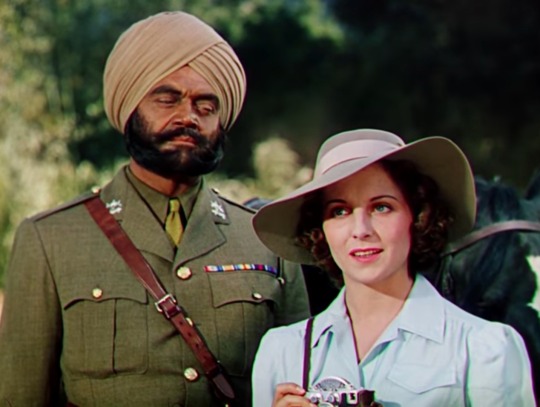
Noble Johnson-Faith Brook "El libro de la selva" (Jungle book) 1942, de Zoltan Korda.
8 notes
·
View notes
Text

Director Zoltan Korda (May 3, 1895 – October 13, 1961), pictured with Gregory Peck on set of THE MACOMBER AFFAIR (1947)
22 notes
·
View notes
Text












*
youtube
#jessica tandy#dragonwyck#joseph l. mankiewicz#1946#a woman's vengeance#zoltan korda#1948#the birds#alfred hitchcock#1963
2 notes
·
View notes
Text
THE DRUM:
Maharaja killed
His son wanted British soldiers
Pro colonial
youtube
#the drum#random richards#poem#haiku#poetry#haiku poem#poets on tumblr#haiku poetry#haiku form#poetic#criterion collection#criterion channel#sabu#raymond massey#roger livesey#valerie hobson#David tree#Desmond tester#zoltan korda#AEW Mason#lajos biro#Arthur wimperis#Patrick Kirwan#Hugh Gray#Francis L. Sullivan#Youtube
1 note
·
View note
Text
SPANKING ON TV #5
The Drum (1938) d. Zoltan Korda

We’re off to the British Raj this time. 14-year-old drummer boy Bill Holder gets into trouble when he’s caught smoking in the barracks. He’s been warned before, so the Sergeant Major bends him over the end of his bed, turns his kilt back and whacks his bare backside with one of his own drumsticks. Pretty hefty whacks too by the sounds of it!








Publicity stills:



The basic plot of the film is jingoism of the highest order, with the Brits trying to track down smuggled shipments of arms on the Northwest Frontier of India to head-off a full-scale rebellion. When the peace-loving ruler of Tokot, a key kingdom in the region, is assassinated, his son Prince Azim goes into hiding. Somewhere along the way he meets and befriends Bill who teaches him how to play the drums. Later Azim is therefore able to bang out a danger signal that saves the British forces from an ambush.
The film went down well with British audiences of the time, no doubt fondly remembering the days of Empire with a tear in their eye, but caused near riots when shown in Bombay and Madras (as they were then called).
It is unknown exactly when the practice of wearing no undergarments under the kilt began. The earliest reference to the tradition was during Waterloo in 1815, but underpants were certainly forbidden by the time of the Raj in India. Indeed, during the First World War, Scottish regiments were inspected by a senior officer who used a mirror to look under kilts; any soldier found wearing underpants was sent back to take them off! We can be confident, then, that the intention is that poor Bill gets his bare arse spanked by the Sergeant Major.
Prince Azim was played by Sabu, a teenage Indian actor who found success in Hollywood during the 1930s and 40s. He was 14 at the time.
Desmond Tester played Bill. He was 18 but had a reputation for playing younger. Previously he was cast by Alfred Hitchcock in Sabotage (1936) as a short-trousered schoolboy called Stevie even though he was 16. He doesn’t get spanked in that film but he is blown up on a bus after being tricked into carrying a bomb by an enemy agent planning a series of attacks on London. Although somewhat slow by today’s frenetic standards, the film was considered shocking at the time. If only they’d known what was coming.





Here's the link to The Drum. Fast forward 9 mins to see the Sergeant Major going Phil Collins on Bill's backside.
youtube
And here's another link to Sabotage. It doesn't end well for Stevie at the 54 min mark.
youtube
And finally here's a bonus Black Watch soldier giving everybody an eyeful in Hong Kong in 1997.

20 notes
·
View notes
Text

Technicolor Familiar Watches Too Many Conrad Veidt Movies Part 2 of ?
(More on what this is all about in Part 1)
Disclaimer: I think I get into more plot spoilers here than I did in my last post, incase that matters to any interested parties reading this.
We're getting into the titles where I mostly went in cold, no expectations or even general ideas of what these movies were about beyond brief descriptions on IMDB or Letterboxd.
Oh and, Disclaimer #2: If the creators/editors/scanners of any images used see their work here, please let me know so I can give you proper credit! 🖤
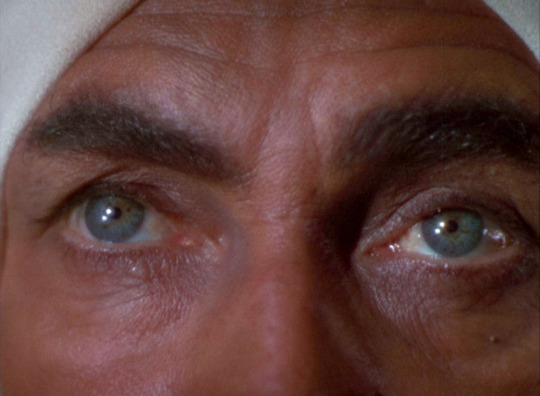
The Thief of Bagdad, 1940 Dir. Ludwig Berger, Zoltan Korda, Tim Whelan, Michael Powell, William Cameron Menzies ⭐2/5 Watched Oct 24, Max Ehhh, I don't know. A lot of people really love this movie. I did not particularly enjoy really anything about it. Sure, it's a groundbreaking technological marvel that set the standard for a lot of future fantasy films. But the story is messy in a way that couldn't be rectified by Movie Magic. All those directors probably account for some of the problems there, but I haven't done a ton of research into the making of the film (what is it with large scale, big budget movies made around this time all having multiple directors?). And, I have to say, putting white actors in brown face is always a tough sell. The third act was partially saved by Sabu and Rex Ingram, two actors of color, having some extended screen time, but only just barely. And frankly, I think Connie, although absolutely glorious in Technicolor, was largely wasted on this one.

Der Student von Prague (The Student of Prague), 1926 Dir. Henrik Galeen ⭐4/5 Watched Oct 29, Archive.org Poor Balduin. All he wanted was a hot, rich girlfriend and what did he get? His evil double chasing him around Prague like Michael Myers. I really loved the old school mirror effects and filming tricks. The updated score in the version I watched was pretty good, too. The final act was excellent. The suspense, the build up -- it's all so well-crafted. And an excellent bridge between high German Expressionism and dramatic period romance. We love to see Connie as the tormented romantic hero. Especially when he's giving face, he's giving eyes, he's giving shapes. I'm having a hard time finding anything negative to say about this one. My only gripe is that it's just a little long, could have had maybe 20 - 30 minutes chopped off (but which 20 - 30 min I could not say).
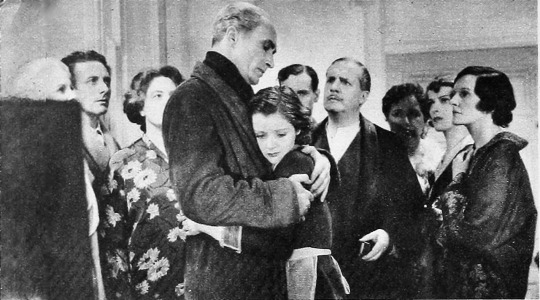
The Passing of the Third Floor Back, 1935 Dir. Berthold Viertel ⭐4/5 Watched Nov 1, Archive.org This film... it's timeless, actually. I may be a grumpy old so-and-so, but stories where one kind and gentle character comes in and leaves a lasting influence on a bunch of deeply flawed or even outright awful people always get me. For some reason, this is the first of Connie's films from the 1930s on my watch list. Not sure what took me so long, but I was really pleasantly taken aback by his delicately nuanced and subdued performance here. His measured gestures and restraint are so great in this film, and so appropriate for the character. I really appreciate the way the Stranger takes time to consider and see the folks at the boarding house in a way they're clearly not seeing each other. I also love that there's not a lot of exposition or explanation like there usually is in similar pictures: Why is the Stranger there? Who/what is he? Where did he come from? The audience kind of gets an answer at the end, but ultimately nothing more than what we're given matters and wouldn't affect the story anyway.
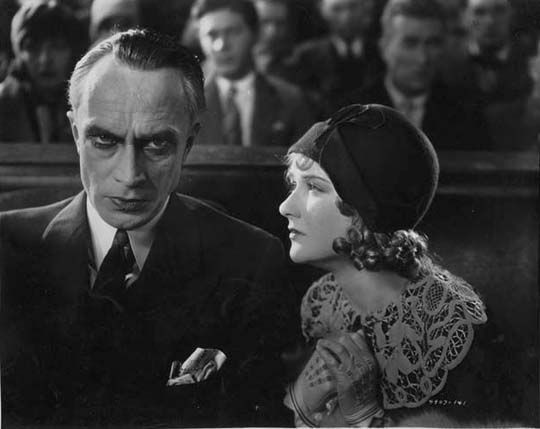
The Last Performance, 1929 Dir. Paul Fejos ⭐4/5 Watched Nov 4, Youtube Gooped and gagged! Somehow we go from adding a fourth to Erik's polycule to MURDER? I'm so mad so much footage (and a voiceover??) was lost. Can we please talk about the big bisexual energy Connie has in this movie, maybe more than any other film on my list so far? From how he physically handles his costars to how he's styled with the heavy makeup, the tails, the dressing gown, it was a lot to take in, and I am living for it. I'm realizing that, as a performer, he really is a master technician, somehow without anything he's doing on screen coming off as inauthentic or too studied, without "showing the work." Erik's face journey when he kisses Julie's hand and wishes her all the best with Mark is worth watching the whole movie for.
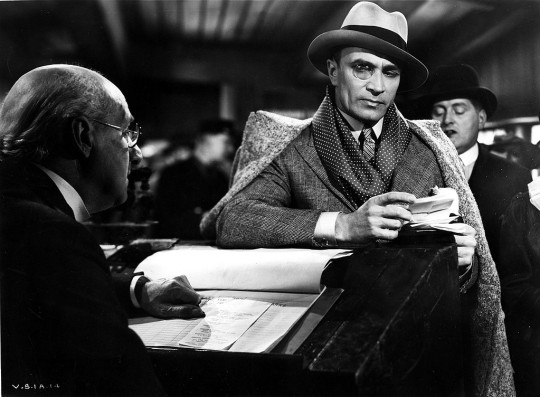
Dark Journey, 1937 Dir. Victor Saville ⭐3/5 Watched Nov 12, Youtube Please believe me when I say I really tried very hard to pay attention to the plot of this movie. But it was extremely difficult as I nearly swallowed my tongue because of how stupidly attractive Connie is as Von Marwitz. He's charming, intense, vulnerable. He really has the range, darling. He's kind of using his lower vocal register a bit which apparently does things to me. (Sorry for all the parentheses in this post, but I was shocked years ago when I saw Casablanca and heard that voice come out of that person. It… it does not go. He's like a early 20th century German Jeremy Irons and I guess I half expected him to sound like that too.) Also, I wasn't into monocles before. I am now. So I have to apologize, I know I said I was going to keep the thirst posts to a minimum but can you blame me? Really? But uh, the movie itself? The story is fine, the script is just ok. There's lots of eye candy with the production design. Vivienne Leigh is doing Vivienne Leigh. And she got that man, so good for her I guess.
Part 3 is going to be all over the place in terms of genre and tone, so we'll see how that goes as I piece together all the stuff I wrote.
#my writing#conrad veidt#the thief of bagdad#the student of prague#the passing of the third floor back#the last performance#dark journey
12 notes
·
View notes
Photo
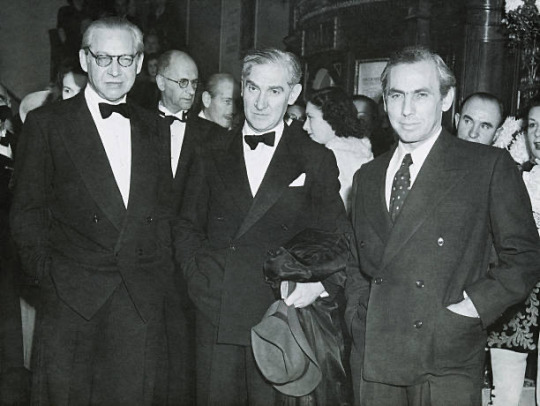
The Korda brothers ( Sir Alexander, Vincent, and Zoltan) at the premiere of An Ideal Husband at the Carlton Haymarket in London, 1947
3 notes
·
View notes
Video
Gustav Fröhlich in Abenteuer eines jungen Herrn in Polen (1934) by Truus, Bob & Jan too! Via Flickr: German collectors card in the series 'Vom Werden deutscher Filmkunst - Der Tonfilm', album no. 11, image no. 87. Photo: Itala-Film / Ross Verlag. Gustav Fröhlich in Abenteuer eines jungen Herrn in Polen/Love and Alarum (Gustav Fröhlich, 1934). Smart German actor Gustav Fröhlich (1902-1987) played Freder Fredersen in the classic Metropolis (1927) and became a popular star in light comedies. After the war he tried to escape from the standard roles of a charming gentleman with the part of a doomed painter in Die Sünderin (1951), but the effort went down in a scandal. Gustav Friedrich Fröhlich was born an illegitimate child in Hannover, Germany in 1902. His father, Gustav König, was a well-known engineer, and his mother Hedwig Therese Sophie Fröhlich, the daughter of a worker. Gustav was raised by foster parents. His foster family moved around western Germany a lot while he was growing up, living in cities like Wiesbaden and Wurzburg. He studied at the Homuth Realgymnasium Friedenau in Berlin. During World War I the young Gustav volunteered for a duty in occupied Brussels as supervisioner of the press. In 1919 he started his career as a trainee at a newspaper, but he spent his spare time as a emcee at local variety shows. He also wrote two issues of a dime novel, Heinz Brandt, der Fremdenlegionär/Heinz Brandt, the Foreign Legionnaire. After some entrances at a vaudeville theater under the stage name Gustav Geef he took acting lessons in Heilbronn. In the next few years he appeared on different minor German stages. In Berlin he played from 1923 till 1925 at the Volksbühne am Bülowplatz under the direction of Erwin Piscator. Later he appeared as The Prince of Homburg at the Deutsche Theater under the direction of Max Reinhardt. His film debut was a small role in a Dutch-German film produced in Germany, De bruut/Ein neues Leben/The Brute (Theo Frenkel, 1922) with Erna Morena and Adolphe Engers. He then played a secondary role as composer Franz Liszt in Paganini (Heinz Goldberg, 1923) featuring Conrad Veidt. The following years, he played in such films as Friesenblut (1925) opposite Jenny Jugo. Then Fröhlich landed his breakthrough role as Freder Fredersen in Metropolis (Fritz Lang, 1927) by chance. He was only scheduled to play one of the workmen but four weeks after the beginning he was discovered on the set by Thea von Harbou, Fritz Lang's wife. Lang immediately cast him in the lead because of his striking good looks. A new star was born. After Metropolis, Gustav Fröhlich was typecast as the fresh-faced, naive 'boy next door' in such silent films as Die elf Teufel/The Eleven Devils (Zoltan Korda, Carl Boese, 1927) with Evelyn Holt, Heimkehr/Homecoming (Joe May, 1928) opposite Lars Hanson, and Asphalt (Joe May, 1929), in which he played a honest policeman who is seduced by a crook (Betty Amann). In 1930, Fröhlich was called to Hollywood by Warner Brothers to do German versions of American sound films, such as Die heilige Flamme/The Holy Flames (William Dieterle (as Wilhelm Dieterle), Berthold Viertel, 1931) and Kismet (William Dieterle, 1931), both with Dita Parlo. Back in Germany, he soon was subscribed for Max Ophüls’ musical comedy Die verliebte Firma/The Company's in Love (1931) next to Lien Deyers, and for Robert Siodmak's crime drama Voruntersuchung/Inquest (1931) with Albert Bassermann. He often worked with director Géza von Bolváry. Between 1931 and 1933 they made six films together. These include Ich will nicht wissen, wer du bist/I Do Not Want to Know Who You Are (Géza von Bolváry, 1932) with Liane Haid, and Was Frauen träumen/What Women Dream (Géza von Bolváry, 1933), which was co-written by Billy Wilder. Fröhlich often played smart gentlemen in lighthearted musicals and romances. Because of his carefree attendance, Fröhlich was seldom allowed to play other characters. One of his greatest successes was his part of the helpful and likable policeman in Oberwachtmeister Schwenke (Carl Froelich, 1935). He also directed films like Rakoczy-Marsch/Rakoczy march (Gustav Fröhlich, Steve Sekely, 1933), Abenteuer eines jungen Herrn in Polen/Love and Alarm (1934), and after the war Wege im Zwielicht/Paths in Twilight (1948), Der Bagnosträfling/The Prisoner (1949) with Paul Dahlke, and the crime drama Die Lüge/The Lie (1950) with Otto Gebühr. Between 1931 and 1935 Gustav Fröhlich was married with Hungarian Opera star and actress Gitta Alpár. When she was pregnant form their daughter Julika, he left her. According to Alpár, because she was Jewish and he did not want to hurt his career in Nazi Germany. After the war, Fröhlich tried a reconciliation with Gitta Alpár but she never forgave him. Reportedly this gave him a tough time at old-age. From 1936 till 1938 he lived together with actress Lída Baarová, his costar in Barcarole (Gerhard Lamprecht, 1935) and Leutnant Bobby, der Teufelskerl/A Devil of a Fellow (Georg Jacoby, 1935). After losing Lída to Joseph Goebbels, Froelich had a quarrel with him. There is an urban legend that the quarrel culminated in a slap in the face of the powerful and feared Propaganda-Minister. Allegedly, Froehlich was banned from playing his trade for two years (1941-1943). Lída Baarová later denied this in her memoirs. In 1937, he rented his house in Berchtesgaden to Adolph Hitler's architect, Albert Speer. In 1941 Fröhlich remarried with Maria Hajek. Since 1941 he had to serve for the Wehrmacht, interrupted by film engagements like Der Grosse König/The Great King (Veit Harlan, 1942) starring Otto Gebühr as Prussian king Friedrich the Second. Gustav Fröhlich was seldom involved in Nazi Propaganda films, a fact that helped him to establish a new film career after World War II. He tried to escape from standard roles of the charming gentleman by playing a doomed painter in Die Sünderin/The Sinner (Willi Forst, 1951). The effort went down in the chaos of a scandal because of the film's open treatment of several taboos such as suicide and euthanasia, plus a brief nude performance by Hildegard Knef. He went on to play leads in light entertainment films including Haus des Lebens/House of Life (Karl Hartl, 1952) with Cornell Borchers, and Die kleine Stadt will schlafen gehen/The Little Town Will Go to Sleep (Hans H. König, 1954) with Jester Naefe. He remained a busy actor after the war but his roles changed from leading men to supporting parts as he got older. From the 1960s on, he had only a few TV film entrances including a part in the comedy Laubenkolonie/Allotment area (Heribert Wenk, Bertold Sakmann, 1968) with Paul Dahlke. He was more active in the theatre, a.o. for the Renaissance-Theater in Berlin and the Schauspielhaus in Zürich. In 1973 he was honoured with the Filmband in Gold, the German Film Award for Lifetime Achievements. Ten years later, he published his autobiography Waren das Zeiten - Mein Film-Heldenleben/Those Were Times - My Life as a Film Hero (1983). His last public appearance was in 1986, when Giorgio Moroder presented his revised version of Metropolis. From 1956 on, Gustav Fröhlich lived in Lugano, Switzerland. There he died in 1987 of a complication after surgery, at age 85. His wife Maria Hajek had passed away earlier that same year. Sources: Lara Goeke (The Gustav Fröhlich Fan Page), Bruce Eder (AllMovie), Thomas Staedeli (Cyranos), Wikipedia (English and German), and IMDb. For more cards of this series, check out our album Vom Werden Deutscher Filmkunst.
#Gustav Fröhlich#Gustav#Fröhlich#German#Actor#Acteur#Schauspieler#Darsteller#European#Film Star#Kino#Cinema#Film#Cine#Picture#Screen#Movie#Movies#Filmster#Star#Vintage#Collectors#Card#Sammelkarte#Verzamelkaart#Carte#Cartolina#Tarjet#Vom Werden Deutscher Filmkunst#Ross
1 note
·
View note
Text

301. Sahara - Em Busca da Sobrevivência (Sahara, 1943), dir. Zoltan Korda
0 notes
Photo
The Thief of Bagdad
T 1940 ‧ Fantasy/Adventure ‧ 1h 46m
The Thief of Bagdad is a 1940 British Technicolor historical fantasy film, produced by Alexander Korda and directed by Michael Powell, Ludwig Berger and Tim Whelan, with additional contributions by William Cameron Menzies and Korda brothers Vincent and Zoltán. The film stars teen actor Sabu, Conrad Veidt, John Justin, and June Duprez. It was released in the US and the UK by United Artists.
Although produced by Alexander Korda's company London Films in London, the film was completed in California due to the outbreak of World War II.
PLOT
A young thief faces amazing monsters to return Bagdad's deposed king to the throne.
Release date: April 11, 1946 (France)
Directors: Ludwig Berger, Tim Whelan, Zoltan Korda, Michael Powell, William Cameron Menzies
Screenplay: Miklós Rózsa, Miles Malleson, Lajos Bíró
Awards: Academy Award for Best Visual Effects, MORE
Adapted from: The Thief of Bagdad
Distributed by: United Artists
Starring
Conrad Veidt Sabu June Duprez John Justin Rex Ingram Mary Morris
The Thief of Bagdad (1940 film) - Wikipedia










The Thief of Bagdad (1940)
329 notes
·
View notes
Text
Is this Johannesburg?
youtube
Stephen Kumalo is traveling to Johannesburg in search of his son and sister. He is an umfundisi, a village pastor, in South Africa. He has no idea of the shocks awaiting him in the city…
Receiving critical acclaim for its powerful message and performances, Cry, the Beloved Country (1951) was one of the first Hollywood films to address apartheid and the social/economic disparities between blacks and whites in South Africa.
🎞film: Cry, the Beloved Country (1951) 🎬director: Zoltan Korda 🟣🟣🟣⚪️⚪️
0 notes
Text

Cartel película "El libro de la selva" (The jungle book) 1942, de Zoltan Korda.
5 notes
·
View notes
Text

Charles Boyer, director Zoltan Korda and Ann Blyth behind the scenes of A WOMAN’S VENGEANCE (1947)
14 notes
·
View notes
Text

A Woman's Vengeance (1948) d. Zoltan Korda (poster from Italy)
Thank heaven the title doesn't give way who the real killer is.
0 notes
Text
THE JUNGLE BOOK (1942):
Mogli falls in love
Deals with bigotry and greed
Lost city treasure
youtube
#the jungle book#random richards#poem#haiku#poetry#haiku poem#poets on tumblr#haiku poetry#haiku form#poetic#criterion collection#criterion channel#sabu#joseph calleia#John Qualen#frank puglia#rosemary decamp#Zoltan Korda#Laurence Stallings#rudyard kipling#noble Johnson#faith brook#Youtube
0 notes
